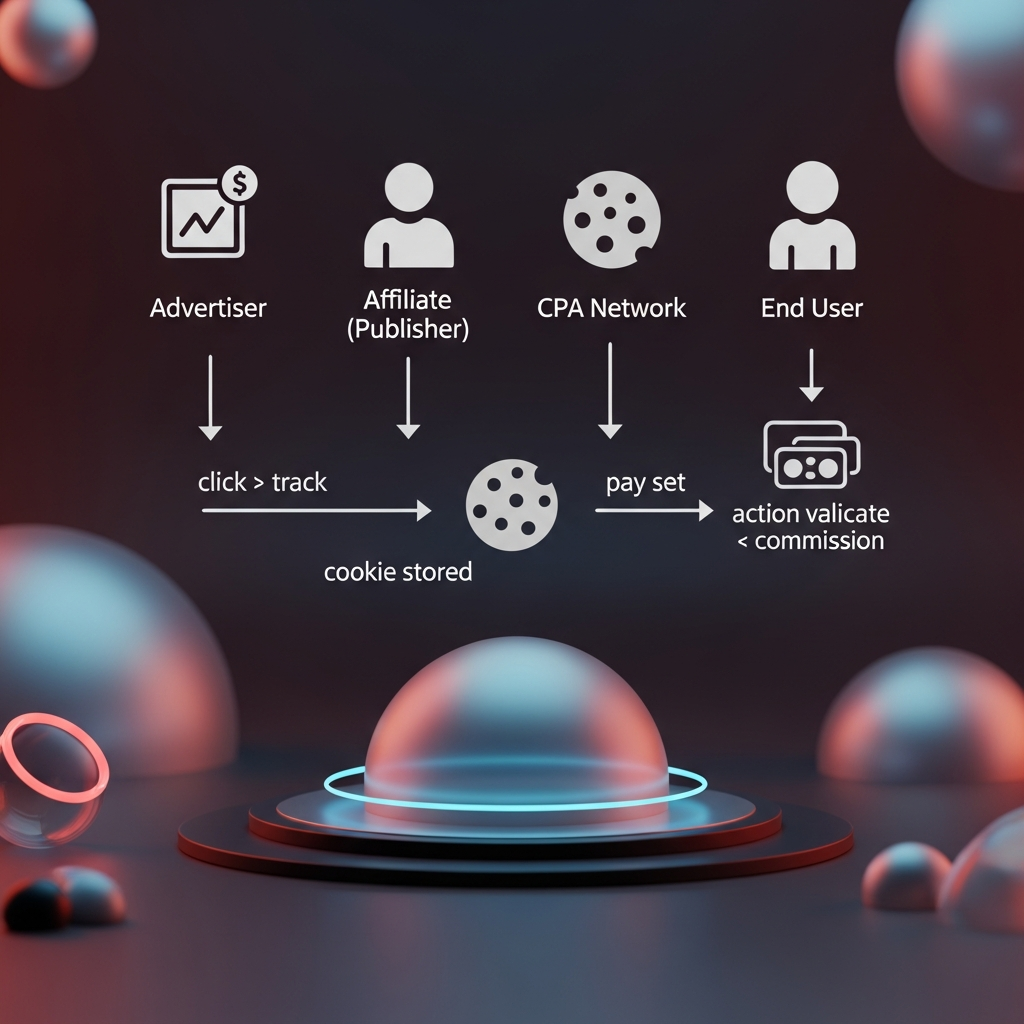Mastering CPA Affiliate Marketing Strategies for Maximum Profit
Understanding the Foundations of CPA Affiliate Marketing

Cost-per-action (CPA) affiliate marketing is a performance-based affiliate model that rewards publishers when a specific action is completed. Unlike traditional pay-per-click (PPC) or pay-per-sale (PPS) programs, CPA focuses on micro-conversions. These can range from filling out a form, signing up for a free trial, downloading an e-book, or any pre-defined action. Since advertisers only pay when the desired action occurs, this model minimizes financial risk and delivers higher ROI. For publishers, it represents an opportunity to tap into diverse campaigns, optimize for specific actions, and scale with budget-friendly offers.
To master CPA affiliate marketing, it’s essential to understand the four key players:
- Advertiser: The brand or company that wants a predefined action from potential customers.
- Affiliate (Publisher): The website, blogger, or traffic source driving clicks and qualified leads to the advertiser via unique tracking links.
- CPA Network: The intermediary platform that connects advertisers to affiliates, manages offers, provides tracking technology, and handles payouts.
- End User: The visitor who clicks the tracking link, completes the required action, and triggers a commission for the affiliate.
Tracking is at the heart of CPA. Every click is tagged with a unique tracking ID. Cookies are planted on the user’s device, storing the affiliate’s ID and offer details for a specified duration. When the end user completes the action—such as submitting a form or verifying their email—the network validates the lead, confirms compliance with offer terms, and releases payment to the publisher. This clear, verifiable process makes CPA marketing one of the most transparent and scalable affiliate structures available today.
Building the Perfect Landing Page for Maximum Conversions

Your landing page is the frontline of your CPA campaign. Even the most lucrative CPA offer will fail if you send traffic to a poorly designed page. Focus on clarity, speed, and persuasive elements. Clarity means a bold headline that instantly communicates the value proposition, followed by a concise subheadline that addresses the visitor’s needs or pain points. Speed is critical—optimize images, minimize scripts, and deploy reliable hosting to ensure sub-two-second load times on both desktop and mobile.
Key elements of a high-converting landing page include:
- Compelling Headline: Quickly let the visitor know what they stand to gain.
- Concise Subheadline: Expand on the main benefit without overwhelming text.
- Bullet-Point Benefits: Highlight top features or outcomes in short, scannable lists.
- Strong Call-to-Action (CTA): Use action-oriented language like “Get Your Free Trial” or “Download Now.” Contrast colors to make the button pop.
- Trust Signals: Include star ratings, testimonials, or security badges under the fold to reassure skeptical visitors.
- Minimal Distractions: Remove unnecessary nav bars, footer links, or sidebars that can lead users away.
Annotations like “clear value prop,” “minimal distractions,” and “social proof” can guide your design process. A/B test headlines and CTA copy relentlessly. A small tweak—changing “Submit” to “Claim Your Free Guide”—can yield conversion increases of 10% or more. Invest time in wireframes and user flows, then iterate quickly based on live data from your CPA network’s tracking dashboard.
Choosing the Right CPA Offers
Not all CPA offers are created equal. Your success depends on selecting offers that align with your traffic sources and audience preferences. Begin by researching the highest-performing verticals: finance, health, dating, software trials, and lead generation. Each vertical has unique payout structures, target demographics, and regulatory considerations. For example, financial and healthcare offers often pay higher commissions but require strict compliance with advertising guidelines.
When evaluating offers, consider:
- Payout Rate: Higher isn’t always better. Balance payout against conversion rate and traffic cost to calculate true ROI.
- Geographic Restrictions: Some offers only convert in specific countries or regions. Match your traffic geo to the offer’s requirements.
- Landing Page Quality: Review the merchant’s landing page. Poor landing pages lead to low conversions and wasted ad spend.
- EPV (Earnings Per Visitor): Divide the average payout by the average conversion rate to estimate EPV. This metric helps prioritize high-value offers.
- Network Reputation: Work with reputable CPA networks known for timely payouts, transparent tracking, and responsive support.
Leverage network filters to sort offers by category, payout, and geo. Download sample creatives and preview landing pages before committing budget. When possible, request extended cookie durations—30 to 60 days—to capture delayed conversions and maximize lifetime value.
Driving Targeted Traffic: Paid, Organic & Beyond
Traffic is the lifeblood of CPA affiliate marketing. Without consistent, high-quality visitors, even the best offer and landing page will underperform. Diversify your traffic portfolio across paid channels, organic strategies, and social media to spread risk and exploit different user intents.
Paid Traffic:
- Search Ads: Google Ads and Bing Ads can deliver high-intent traffic. Use long-tail keywords, tight match types, and negative keywords to refine clicks.
- Social Media Ads: Facebook, Instagram, TikTok, and LinkedIn offer granular targeting by age, interests, behaviors, and job titles. Leverage lookalike audiences and retargeting for higher ROI.
- Native Ads: Taboola, Outbrain, and RevContent can generate lower-cost clicks if you craft compelling headlines and compelling thumbnails.
- Push Notifications: Emerging as a low-cost channel, push ads require permission-based lists and catchy copy to drive opt-ins and conversions.
Organic Traffic:
- SEO Content: Build topical authority with in-depth guides, reviews, and comparison posts. Embed your CPA links naturally within high-value content.
- Email Marketing: Grow a permission-based list with free lead magnets, then drip educational content that segues into CPA offers.
- YouTube: Produce tutorial or review videos, demonstrating the offer’s benefits. Include tracking links in descriptions and pinned comments.
Experiment with micro-niches within your vertical—people searching for “best no-credit-check loans” or “beginner keto meal plan.” These highly specific queries can deliver lower-cost clicks and higher conversion rates when matched with relevant offers.
Conversion Rate Optimization (CRO) Techniques
Once traffic is flowing, focus on conversion rate optimization (CRO). Every percentage point increase in conversion rate multiplies your earnings without raising ad spend. Use heatmaps, session recordings, and user polls to identify friction points. Is your CTA buried below the fold? Are visitors abandoning at the form field due to confusion or trust issues?
Test the following CRO ideas:
- Form Field Reduction: Ask only for essential information. If you require an email and phone number, test email-only forms to see if conversion rates improve.
- Urgency & Scarcity: Add countdown timers or limited-time bonuses to motivate immediate action. Phrases like “Offer expires in 24 hours” can create a sense of urgency.
- Multivariate Testing: Beyond A/B testing, multivariate experiments can uncover the best combination of headlines, images, and CTA colors.
- Social Proof Placement: Move testimonials closer to the CTA button or add a dynamic feed of recent sign-ups to reinforce trust.
- Chat Widgets: Offer live chat or AI-powered chatbots to answer visitor questions in real time, reducing drop-off rates.
Track your experiments in a centralized dashboard. Pause losing variants quickly and scale winners. Remember that what works for one offer or demographic may not apply to another; continuous testing is the name of the game.
Advanced Tracking and Analytics
A robust tracking setup is non-negotiable for scaling CPA campaigns. While your CPA network provides basic click and conversion data, consider integrating a third-party tracker like Voluum, Thrive Tracker, or FunnelFlux. These tools enable advanced features such as multi-touch attribution, server-to-server postbacks, and real-time pipeline visualization.
Key tracking best practices include:
- Server-Side Tracking: Avoid ad blockers and browser restrictions by implementing server-to-server postbacks for 100% accurate conversion reporting.
- UTM Parameters: Tag every campaign URL with utm_source, utm_medium, and utm_campaign to unify data in Google Analytics, especially for organic and email traffic.
- Funnel Segmentation: Break down performance by device type, geo, ISP, and landing page variant to identify hot and cold segments.
- Fraud Prevention: Monitor for abnormal click patterns, high refund rates, or multiple sign-ups from the same IP range. Block suspicious traffic sources proactively.
By harnessing comprehensive analytics, you can pinpoint which traffic sources, landing pages, and offers deliver the highest EPM (earnings per mille) and double down on your winners.
Scaling and Automation for Long-Term Success
Once you’ve nailed the fundamentals—landing pages, targeting, and CRO—it’s time to scale. Manual campaign management becomes insufficient as budgets and data volume grow. Embrace automation and smart scaling tactics:
- Bid Automation: Use platform bid automation rules to raise bids on high-performing segments and lower bids on underperformers automatically.
- Rule-Based Pausing: Set thresholds for CPA cost and ROI. Automatically pause campaigns or ad sets that exceed your target CPA.
- API Integration: Connect your tracker to ad networks via API for real-time bid adjustments, creative flips, and geo-targeting changes.
- Dynamic Creative Optimization: Test multiple headlines, images, and CTAs within a single ad, letting the algorithm find the top performer.
- Outsourcing & Teams: Delegate routine tasks—such as keyword research, landing page updates, and data analysis—to virtual assistants or in-house specialists.
Always maintain a lean, data-driven approach. Scale budgets on campaigns with a positive ROI, but cap at safe thresholds to avoid traffic sources shifting in quality as spend increases. Continuously seek new verticals and geos to spread risk and uncover fresh growth channels.
Common Pitfalls and How to Avoid Them
Even experienced affiliates encounter roadblocks. Being aware of common pitfalls helps you steer clear of costly mistakes:
- Overlooking Compliance: Misleading ad copy or missing disclaimers can get offers banned or accounts suspended. Follow network and legal guidelines to the letter.
- Chasing Shiny Objects: Frequent tool or channel hopping can drain your budget and attention. Master a few channels before diversifying.
- Ignoring Mobile Optimization: With over half of all web traffic on mobile, a non-responsive landing page can decimate your conversions.
- Poor Budget Management: Dumping your entire budget into a new offer without testing small batches can lead to runaway losses.
- Lack of Diversification: Relying on a single offer, network, or traffic source exposes you to high risk if that channel dries up.
Regularly audit your campaigns, review network newsletters for compliance changes, and rotate offers to keep your funnel fresh. A disciplined, systematic approach yields compounding gains over time.
Conclusion
Mastering CPA affiliate marketing requires a blend of strategic planning, creative testing, and relentless optimization. By understanding the affiliate ecosystem, crafting high-impact landing pages, selecting the right offers, and leveraging advanced tracking and automation, you set the stage for sustainable, profitable growth. Remember to diversify your traffic sources, experiment with new verticals, and maintain rigorous compliance to stay ahead of the competition. With diligence, data-driven decisions, and a focus on long-term scaling, you can transform a modest side income into a thriving affiliate marketing enterprise.









